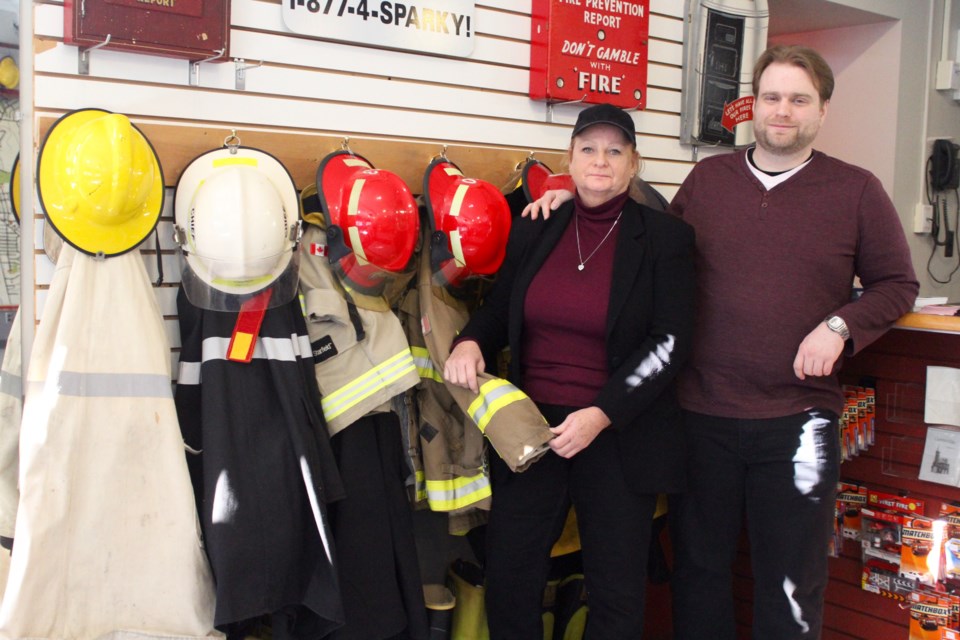After the Sault Ste. Marie fire department announced last week it will be the first in Canada to switch to bunker gear free of a toxic substance used to repel water, Cambridge continues to look into alternative options.
Per- and Polyfluorinated Substances, better known as PFAS, are a group of over 4,700 human-made forever chemicals that have been linked to health concerns, including cancer.
Not unique to firefighter bunker gear, PFAS can be found in various lubricants, cosmetics, surfactants, non-stick cookware, food packaging materials, repellents and textiles.
Innotex is the manufacturer of the new gear for the Sault department distributed by A.J. Stone.
And while the news is certainly encouraging, there are challenges that need to be overcome before Cambridge jumps on board.
"We've been actively monitoring this situation," said Brad Churchill, deputy fire chief for the Cambridge Fire Department.
"There's a lot of unknowns. I know Vancouver has made the announcement to test 80 firefighters in PFAS-free gear. We're watching very closely and working with our joint health and safety committee to make it a priority."
But with limited data available, Churchill said there's a level of risk versus reward at play.
Thermal protection, heat loss and overall protection levels are the main concerns the department is keeping an eye on.
The other challenge is cost and the 10-year life cycle of the department's current gear.
"We're not sure the PFAS gear is good for 10, it could be three or five," Churchill said.
"We're being proactive in researching, but we're precautionary because that could become problematic if we're changing gear every three years. That's buying four sets of gear in the same amount of time."
The department's gear is scheduled to be replaced in 2025 and each set of two new PFAS-free pants and coats come at a cost of approximately $3,800.
Drew Davidson, the son of a retired Cambridge firefighter and a chemical engineering graduate student at the University of Waterloo, has started research and development into his own solution.
Davidson is aware of the material being used by Innotex but believes more needs to be known about how it reacts in real life situations.
"This new PFAS-free gear certainly passes the existing standards, but without knowing more about how this material will perform over time, we believe that giving firefighters more options to eliminate PFAS is critical to making sure this problem can be eliminated," Davidson said.
"If you check out the Innotex website, you can see it's based on either Dupont's material or Steadfast's. With only a handful of players in the firefighter gear market, there is definitely demand for more innovative solutions."
Industrial partners Davidson is working with aren't completely satisfied with what they've seen so far on the market, he said.
He hopes to have a prototype of his own in the coming months.
"We believe that we'll exceed the existing alternatives and provide a greener solution and we're making quick progress in the lab," Davidson said.
"We won't stop until every firefighter has a PFAS-free suit in their hands."
As the waiting game continues for more information, Churchill said the department is already proactive in its safety measures.
The gear is not allowed in the living quarters of the station and staff are advised not to carry it in their personal or work vehicles unless properly contained.
To aid in public safety, firefighters are told to refrain from allowing children and families from trying on the uniform at public events and prohibit repurposing old gear for use as backpacks and bags.
In the spring of 2023, CFD moved away from PFAS fire foam to a green solution that doesn't contain the harmful chemicals.
"We've worked with researchers from the University of Waterloo and continue to find partnerships with industry experts," Churchill said.
"I was a firefighter for 25 before becoming deputy chief and it's a priority for me."

